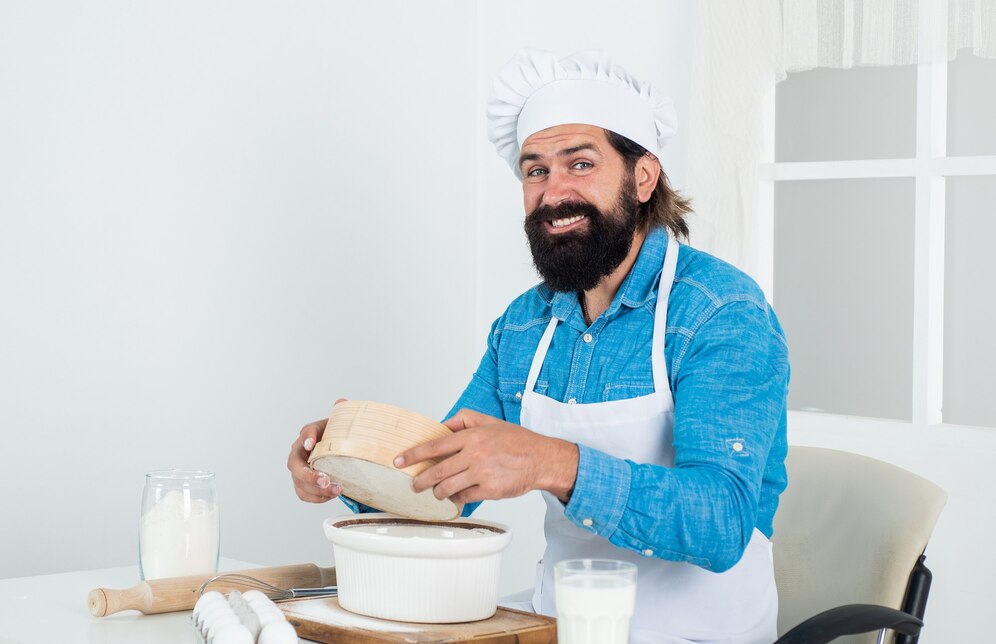
Nothing quite beats the smell of freshly baked bread wafting through your home. For foodies, home bakers, and culinary enthusiasts, creating your own homemade bread is not just a rewarding experience but also a delicious one. If you’ve ever wanted to perfect your bread baking skills, you’ve come to the right place. This guide will walk you through everything you need to know to bake the best bread possible.
There’s something magical about transforming simple ingredients into a loaf of bread. The process of mixing, kneading, proofing, and baking connects us to a timeless tradition. Plus, the satisfaction of slicing into a warm, crusty loaf straight from your oven is unparalleled.
From choosing the best ingredients to mastering the techniques, baking bread at home can be both an art and a science. And with a few essential tips and tricks, you can elevate your bread-making game and impress your friends and family.
Before we get into the nitty-gritty details, it’s crucial to understand the basics of bread making. High-quality ingredients are the foundation of great bread. Opt for fresh, unbleached flour, active yeast, and filtered water. These simple ingredients can make a massive difference in the taste and texture of your bread.
Patience plays a significant role in bread making. Rushing through the process can result in subpar bread. Allowing your dough to rise correctly and giving it enough time to develop flavors are vital steps that should not be overlooked.
The quality of your ingredients directly impacts the quality of your bread. Use high-protein flour, preferably bread flour, as it contains more gluten, which gives bread its structure and chewiness. Fresh yeast or active dry yeast is essential for a good rise, and filtered water helps avoid any impurities that could affect the dough.
Salt enhances the flavor of your bread but also strengthens the gluten network, making it crucial for both taste and texture. Finally, consider using natural sweeteners like honey or molasses for a richer flavor profile.
Kneading is a crucial step in developing the gluten structure necessary for a good loaf of bread. Proper kneading ensures that the dough becomes elastic and smooth. A common technique is the “stretch and fold” method, where you stretch the dough and fold it over itself repeatedly.
Another effective method is “slap and fold,” where the dough is slapped against the work surface and folded. Both techniques help develop the gluten network, resulting in a well-structured and airy loaf.
Proofing, or allowing the dough to rise, is a critical step that lets the yeast ferment and produce carbon dioxide, making the dough rise. Proper proofing involves letting the dough rise in a warm, draft-free environment until it has doubled in size.
Under-proofing can lead to dense, heavy bread, while over-proofing can cause the dough to collapse. Keeping an eye on the dough and knowing when it’s ready to bake is essential for achieving the perfect loaf.
Shaping your dough correctly ensures an even bake and a beautiful final product. Start by gently flattening the dough to remove any large air bubbles. Then, fold the dough into itself to create tension on the surface, which helps the bread hold its shape during baking.
Common shapes include round boules, elongated batards, and sandwich loaves. Each shape requires slightly different techniques, but the goal is to create a tight, uniform structure that will rise evenly in the oven.
 Baking is the final step in the bread-making process, and it’s where all your hard work comes to fruition. Preheating your oven to the correct temperature is crucial for a good bake. A hot oven ensures that the bread rises quickly and forms a beautiful crust.
Baking is the final step in the bread-making process, and it’s where all your hard work comes to fruition. Preheating your oven to the correct temperature is crucial for a good bake. A hot oven ensures that the bread rises quickly and forms a beautiful crust.
Using a baking stone or Dutch oven can help achieve an even bake and a crispy crust. Additionally, adding steam to your oven during the first part of the bake helps develop a glossy, crackling crust. This can be done by placing a pan of water in the oven or spraying the dough with water before baking.
Understanding the science behind bread making can help you troubleshoot issues and improve your technique. Bread is a combination of flour, water, yeast, and salt. When these ingredients are mixed, gluten forms, giving bread its structure.
Yeast ferments the sugars in the flour, producing carbon dioxide and alcohol. The carbon dioxide gets trapped in the gluten network, causing the dough to rise. Baking sets the structure and evaporates the alcohol, leaving you with a delicious loaf of bread.
Even experienced bakers encounter issues from time to time. Here are some common problems and their solutions:
Experimenting with different types of flour can add variety and complexity to your bread. Whole wheat flour adds a nutty flavor and more nutrients, while rye flour gives bread a robust, earthy taste. You can also try spelt, buckwheat, or oat flour for unique textures and flavors.
When using alternative flours, keep in mind that they may require adjustments to hydration levels and proofing times. Start by substituting a portion of your bread flour with the alternative flour and see how it affects your dough.
Adding ingredients like seeds, nuts, dried fruit, or herbs can take your homemade bread to the next level. These add-ins not only enhance the flavor but also add interesting textures to your bread.
Incorporate add-ins during the final stages of kneading to ensure even distribution. Be mindful of the moisture content of your add-ins, as they can affect the hydration of your dough. For example, rehydrate dried fruit before adding it to prevent it from absorbing moisture from the dough.
Proper storage is essential to keep your homemade bread fresh for as long as possible. Store bread in a paper bag or bread box to maintain its crust while preventing it from going stale. Avoid storing bread in plastic bags, as they can trap moisture and make the crust soggy.
If you have more bread than you can eat, consider freezing it. Slice the bread before freezing, so you can easily take out individual slices as needed. Wrap the slices in plastic wrap or aluminum foil and place them in a resealable freezer bag for best results.
 Baking bread is a labor of love, and sharing it with others can be incredibly rewarding. Whether you gift a loaf to a friend, bring it to a potluck, or simply share it with your family, homemade bread is a wonderful way to show you care.
Baking bread is a labor of love, and sharing it with others can be incredibly rewarding. Whether you gift a loaf to a friend, bring it to a potluck, or simply share it with your family, homemade bread is a wonderful way to show you care.
Encourage others to join you in your bread-baking adventures. Host a bread-baking party or start a baking club to share tips, techniques, and delicious results with fellow enthusiasts.
Creating delicious homemade bread is a fulfilling and enjoyable endeavor. By understanding the basics, mastering key techniques, and experimenting with different ingredients, you can elevate your bread-making skills and produce exceptional loaves. Remember, practice makes perfect, and the more you bake, the better you’ll become.
It is a long established fact that a reader will be distracted by the readable content of a page when looking at its layout. The point of using Lorem Ipsum is that it has a more-or-less normal distribution
contact us : laynmade5@gmail.com